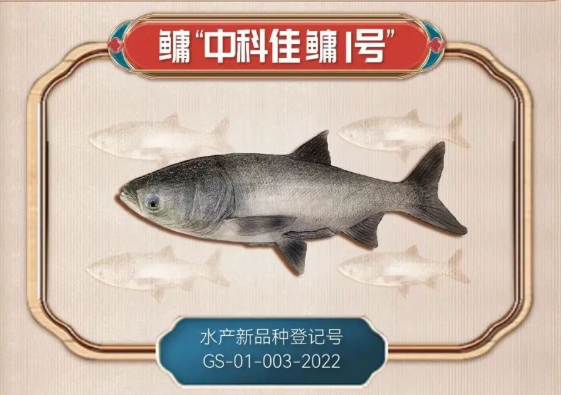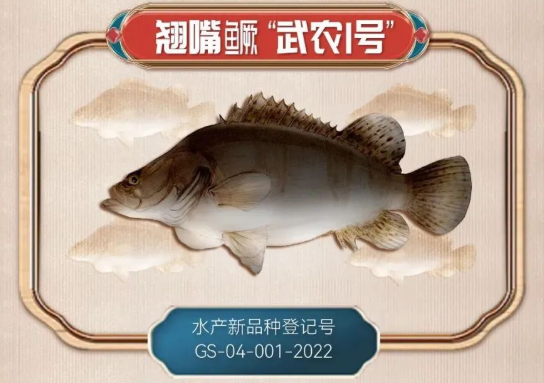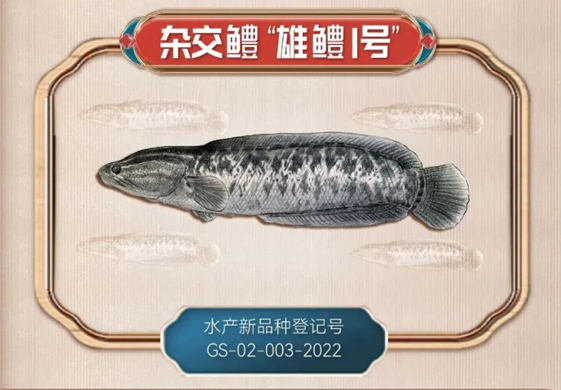
Newsroom
Three New Fish Varieties Bred by IHB Receive National Certification
The National Aquatic Original and Eugenic Variety Approval Committee approved 26 new aquatic varieties, according to the recent announcement issued by the Ministry of Agriculture and Rural Affairs, including the new high-yielding and high-quality bighead carp variety "Zhongke Jiayong No. 1", the new variety of mandarin fish "Wunong No. 1" and the hybrid snakehead "Xiongli No. 1".

High-quality bighead carp variety "Zhongke Jiayong No. 1" (Credit: IHB)
The bighead carp is one of the "four major fishes" in China, and it has an extensive history of culture and production, but there have been no excellent varieties from artificial selection for a long time. In collaboration with Hubei Huangshi Fu’er Aquatic Seed Co., "Zhongke Jiayong No.1" was bred by the team of Prof. TONG Jinguo from the Institute of Hydrobiology (IHB) of the Chinese Academy of Sciences after more than 20 years of efforts that started with the fish genetic breeders of older generation.
This variety, derived from wild bighead carp collected in the Yangtze River section between Wuhan and Huanggang, is characterized mainly by its growth rate and head size. After population selection and breeding in two generations, the researchers obtained a female parental population by gynogenesis and molecular marker-assisted selection in two consecutive generations, then they continued to select other individuals and obtained a male parent population using the above methods. They mated the female and male parents and obtained the new variety "Zhongke Jiayong No.1".
As a result of two years of comparative and pilot culture trials in Hubei Province and Jiangsu Province with ponds on a total area of 8,100 mu under the same conditions, "Zhongke Jiayong No. 1" increased its weight by 14.5% and its head length by 5.5% at 18 months of age compared to unselected bighead carp.
With the successful breeding and large-scale application of "Zhongke Jiayong No. 1, China's freshwater aquaculture will be encouraged and the quality and efficiency of aquaculture will be improved.

High-yielding and high-quality variety of mandarin fish "Wunong No. 1" (Credit: IHB)
As an important freshwater fish in China, mandarin fish occupies a historical and valuable position. In collaboration with the Wuhan Fisheries Science Research Institute, IHB developed a new high-yielding and high-quality variety of mandarin fish called "Wunong No. 1".
This variety is derived from the wild mandarin fish in the Jiayu river section of the Yangtze River. After population selection, gynogenesis and artificial sex reversal, the researchers used artificial sex control to bred this variety by mating the sexually mature pseudo-males with females.
Under the same breeding conditions, the body weight of "Wunong No. 1" increased by 22.0% on average at seven months of age and the female rate was 99.7% on average compared with that of unselected mandarin fish.
The successful breeding of this new variety adds a new member to the mandarin fish family, and its industrial application will provide seed support for improving the efficiency of the mandarin fish farming industry.

Hybrid snakehead "Xiongli No. 1" (Credit: IHB)
The hybrid snakehead "Xiongli No. 1" was bred by the Pearl River Fishery Research Institute, Chinese Academy of Fishery Sciences in cooperation with IHB and other units.
This variety is obtained by crossbreeding. The researchers mated the female snakehead (XX), which was introduced from Shandong in 2007 and selected for body weight in two consecutive generations of population selection, with the super-male snakeheads (YY) came from the males (XY) mating with the pseudo-females (XY) induced by gender control technology collected from the Pearl River in Guangdong in 2005 and selected for body weight in four consecutive generations.
Male snakeheads grow faster than female snakeheads, so testing under the same breeding conditions has resulted in an increase in weight of seven-month-old fish of "Xiongli No.1" by 26.2%, a 93.0% male rate, a significant increase in large-sized fish, a considerable increase in comprehensive breeding efficiency, and a significant increase in market value and farming efficiency of commercial fish.